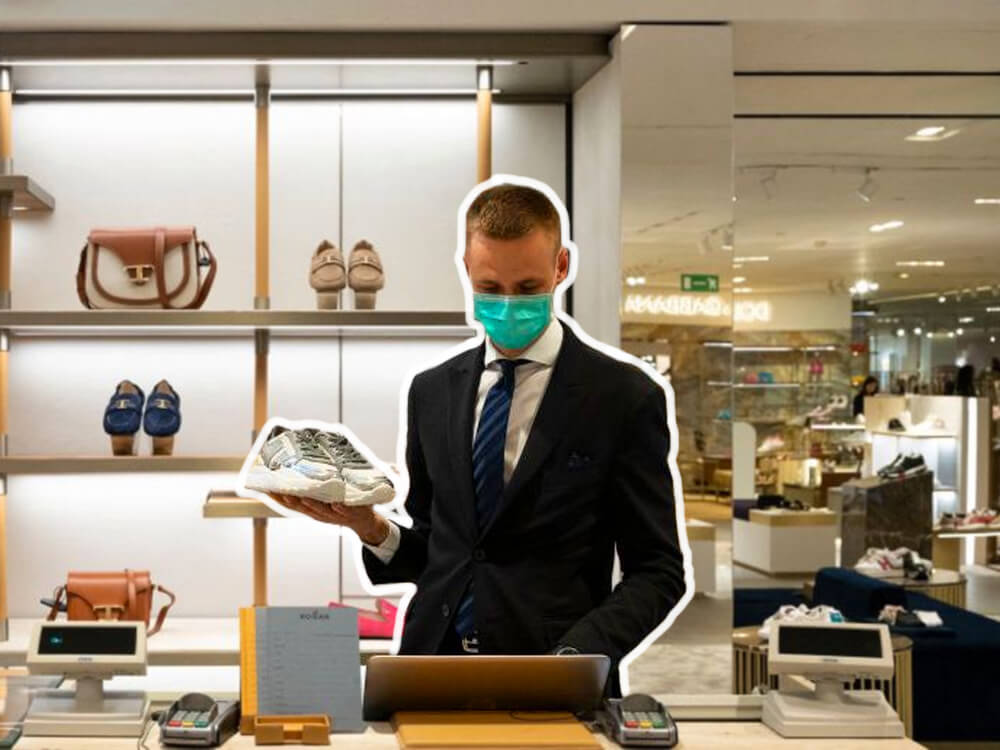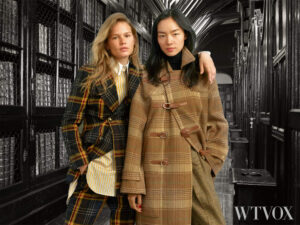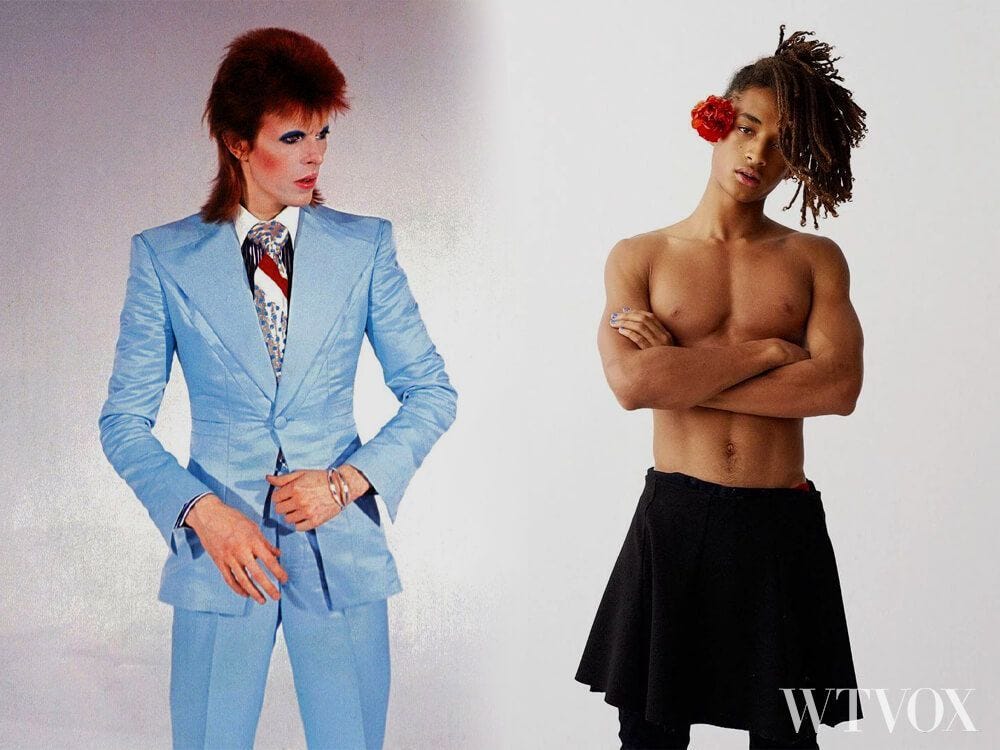The effect of COVID-19 on fashion is finally here, as the Census Bureau consumer spending data for the month of March shows a 50% drop for clothing.
Anyone could have guessed that lockdown orders around the country would lead to a drop in retail sales, but the extent of the decline was staggering.
Sales plummeted by 8.7%, the largest-ever decrease on record. This is nearly triple the previous worst month on record in 2008.
And clothing and accessory brands took the biggest hit, dropping by an astronomical 50.5%.
This raises big questions about the future of fashion. As brands scramble to reorganise their businesses to respond to the crisis, some are not likely to make it.
This could completely transform the landscape of the industry in the next few months and years.
Why Is Fashion Spending Dropping?
Consumers are actually spending less on clothing and more on essential goods.
Grocery spending is increased by 26.9% while the health stores saw a 4.3% growth in sales.
This is partly because these are the only brick-and-mortar stores that are allowed to remain open right now.
But it is also because people don’t spend money unnecessarily with a significant recession looming on the horizon.
“There is a lot of uncertainty and anxiety about the future,” says Andrew Lipsman, principal analyst at the research firm eMarketer.
“People are shifting their spending to focus on the things they really need and cutting their budgets on less essential goods.”
But the coronavirus lockdown has changed our lifestyles in ways that make buying new clothes particularly irrelevant.
What Category Is Hit The Worst?
Following the COVID-19 effect on fashion, Lipsman says that categories of apparel that are designed to be worn in public settings have become irrelevant.
Workwear or formal wear sales have been hit harder than brands that focus on the clothes we wear at home, like loungewear.
And accessories brands that focus on travel have also seen revenues tank. Away, for instance, reported sales declines of 90%.
“That’s just a really unfortunate consequence of the travel restrictions we’re facing,” he says.
Also suffering are brands that have large fleets of brick-and-mortar stores.
“Digitally native brands, which have always relied on the internet to engage customers, are weathering the storm better than brands that still relied heavily on customers coming into stores,” says, Jordan Elkind, VP of product marketing at Amperity, based on the recent data his company has collected about a wide range of brands.
| Most-Read Articles |
Who Does Buy Fashion During COVID-19?
Many apparel brands are currently offering big promotions and discounts to generate revenue and clear their inventory.
Elkind assumed that the people most likely to buy clothes during these sales would be millennial professionals.
But his data tells another story. He’s found that it’s customers over 60 that have been most likely to spend on fashion items.
“One hypothesis brands have is that these young professionals also have young children, so they don’t have a lot of time to spend online shopping right now,” he says.
“But this is also revealing that older consumers are more comfortable shopping online than previously thought.”
COVID-19 Effect On Fashion Retail
So what can we expect going forward?
Analysts believe that consumer spending on fashion is going to decline even further if lockdown orders continue into May (or longer) and unemployment figures keep rising.
However, brands that are able to sell online will lose less revenue than their counterparts. But the bleeding is not likely to stop in the next few months.
And even being digitally native is no guarantee of survival. Many direct-to-consumer brands are suffering too.
“I can tell you for sure that the numbers for April are likely to be even worse,” says Lipsman.
“People are going to put their stimulus checks toward essential goods, like groceries and credit card payments.”
People won’t be buying new clothes. In the longer term, this extended period of disruption could completely change the fashion landscape.
Coresight Research, which collects data about the retail sector, expects 15,000 stores to close permanently as a result of this crisis.
This could force some brands into bankruptcy.
“We don’t expect things to be normal for at least a year, perhaps longer,” Elkind says.
“Some brands will just not be able to make it through this period of extended decline in sales.”
Online Vs Brick-And-Mortar Retail
Both Lipsman and Elkind believe that the COVID-19 effect on fashion will accelerate a transformation that was already underway in the world of brick-and-mortar retail.
For years, there has been talking of a “retail apocalypse” as consumers eschew stores in favour of shopping online.
That led many brands to move into experiential retail. To create in-store events and activities to lure patrons, while doubling down on digital experiences.
“Many apparel companies were already in the process of rethinking their retail strategy or actively reworking it,” says Elkind.
“This is going to force them to transition even more quickly to become more digital. And those that cannot make the leap will just not survive.”
The Survivors
Whether or not a brand is able to survive depends on some idiosyncratic factors.
This includes what particular kind of product it makes. It depends on the market demand it serves.
Suitcase brand ‘Away’ has been harder hit than sneaker brand ‘Allbirds’, for instance.
But ultimately, industry analysts believe that the DTC approach is likely to endure once the crisis is over.
This is having a direct relationship with your customer, largely nurtured on the internet.
The DTC brands that do survive have the potential to become much more successful in the aftermath of the coronavirus crisis because many of their competitors will have gone under.
| This article originally appeared on Fast Company – read the full article here |
WTVOX – ‘Voicing the Future of Fashion’
For more similar content and lightning-quick updates delivered directly to your inbox subscribe to our weekly newsletter.
For daily news in sustainable fashion, innovation, conscious beauty and lifestyle follow us on social media: Instagram, LinkedIn, Facebook, Twitter.
Finally, if you want to interact with thousands like you, join your tribe on the Future of Fashion Group.
A decade of fashion; here’s to the next one.The past decade has been turbulent – and defining – for fashion: child labour, climate crisis, gender inequality, animal cruelty, and reckless plastic pollution, just to name a few. With the COVID-19 pandemic, the beginning of this decade does not look too good either. That’s why finding media that reports with rigour and integrity at heart is difficult in critical times. Finding media that informs all, regardless of where they live or if they can afford to pay, is even harder. In these times, independent fashion media magazines are increasingly silenced by commercial ownership and social media misinformation. So far, your unceasing support has allowed us to keep delivering trustworthy, relevant, high-quality content. Your support allowed us to uphold our editorial independence and ensure honest journalism, free from commercial ownership or political bias. We are deeply grateful for your generosity and continue to count on your support. Thank you. |






